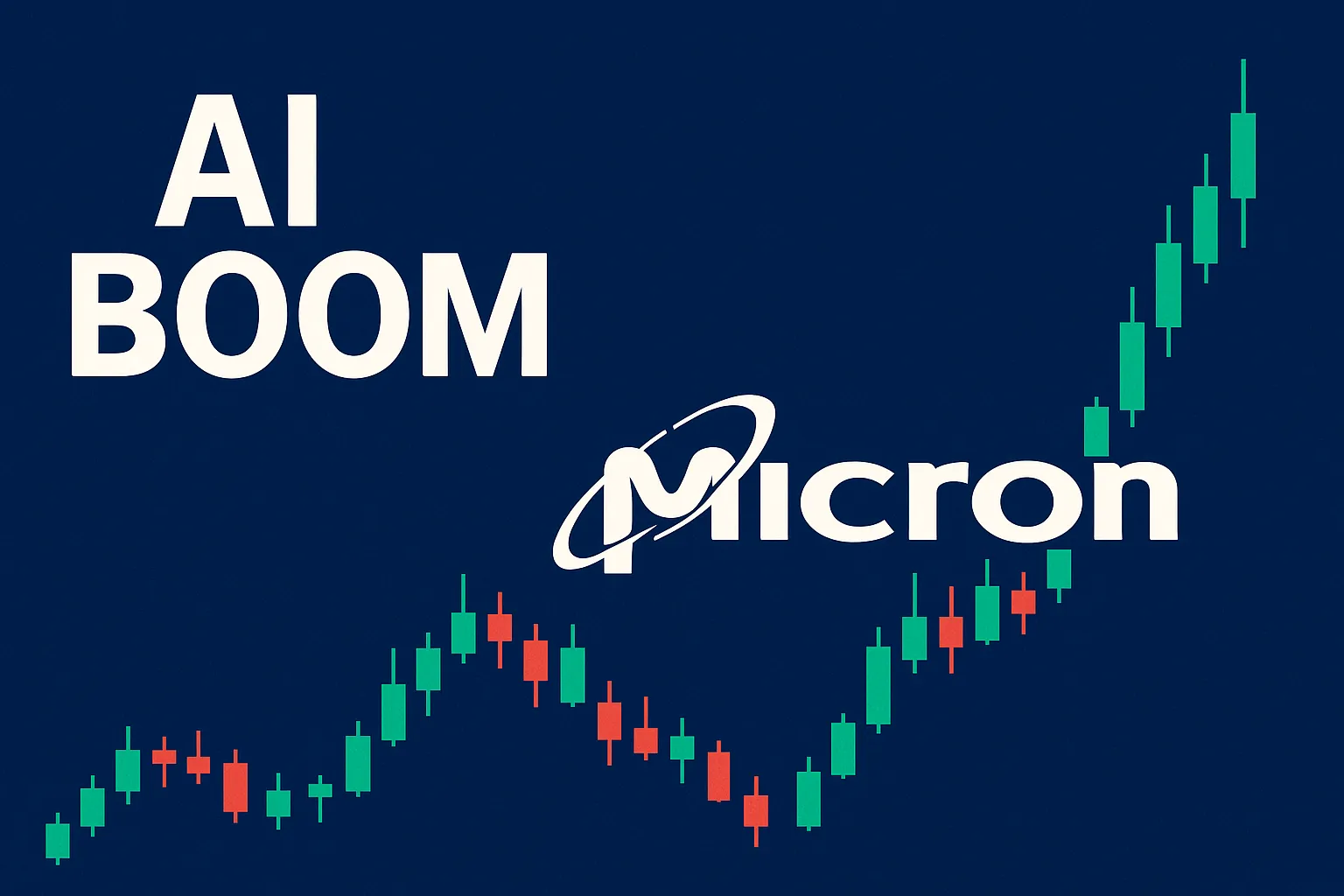Micron Technology earnings have become the latest spark for Wall Street’s obsession with artificial intelligence. The company posted fiscal Q4 revenue of $11.32 billion, far above analyst forecasts. The driver was clear: high-bandwidth memory, now indispensable for training massive AI models.
The company went further, forecasting $12.5 billion in revenue for Q1 2026. Investors cheered, pushing the stock up double digits. Yet beneath the optimism hides a familiar danger. Micron is feeding on the AI boom, but the line between sustainable growth and speculative euphoria grows thinner by the day.
Context: Wall Street crowns a new winner
Financial media celebrated the results as proof that the AI revolution is transforming global markets. Reuters reported the company’s stock surged more than 10% after the results. Bloomberg described Micron as “uniquely positioned” to capture the surge in AI demand.
The story fits Wall Street’s hunger for narratives. Just as Nvidia became the poster child of AI chips, Micron is now painted as the king of memory. The argument is straightforward: without high-bandwidth memory, data centers cannot power large language models or advanced AI tools.
Microsoft, Google, Amazon, and Meta are investing billions to build new AI infrastructure. Micron stands at the center of this rush. Investors see limitless upside, and the forecast of $12.5 billion in revenue only fuels the excitement.
Oppositional Argument: Dependency disguised as strength
Yet the truth is less glamorous. Micron Technology earnings depend on a narrow set of customers engaged in an arms race. Big Tech companies are spending recklessly on AI infrastructure, not because of proven profits, but because of fear of being left behind.
This dependence exposes Micron to concentrated risk. If any of these giants scale back spending, Micron’s growth evaporates instantly. The AI sector resembles a casino table more than a stable market. Investors see booming demand today, but they ignore how fragile it truly is.
Micron’s rally reflects Wall Street’s desperation to keep the AI dream alive. But history warns us: when valuations depend on hype, collapse follows.
Analytical Breakdown: The numbers behind the euphoria
Micron’s $11.32 billion in revenue is impressive. However, revenue alone hides important details. Margins remain volatile, and memory prices can swing dramatically. The semiconductor industry has always been cyclical—today’s boom can become tomorrow’s glut.
Forecasting $12.5 billion for Q1 2026 assumes two risky conditions. First, that Big Tech spending continues at breakneck speed. Second, that global markets remain stable enough to sustain such investment. Both assumptions are shaky.
Interest rates remain high. Global debt levels keep rising. Consumer spending shows signs of fatigue. And most importantly, the AI industry still lacks proven monetization. Companies are burning billions on infrastructure, yet profits from AI tools remain uncertain.
Consider the telecom bubble of the late 1990s. Billions were invested in fiber optics, under the assumption that demand would explode. By 2001, much of that infrastructure sat unused, and countless firms collapsed. AI could repeat that story, with Micron cast as one of its tragic stars.
Human Perspective: Retail investors and workers caught in the hype
For everyday investors, Micron’s stock surge feels like opportunity. Many remember Nvidia’s rise and assume Micron is the next big winner. Yet the situations differ. Nvidia controls a unique ecosystem of GPUs and software. Micron sells a product prone to commoditization.
Retail investors risk being caught in a classic trap: buying the peak of a hype cycle. Pension funds and small investors may think they’re securing growth, but instead, they might be gambling on volatility.
Even workers at Micron should stay cautious. Semiconductor companies often expand during booms, only to slash jobs in downturns. In Boise, Idaho—home to a major Micron facility—workers have seen this cycle before. Job security tied to speculative bubbles is no real security at all.
Counterarguments
Optimists argue this cycle differs from the past. They say AI demand will only grow, transforming healthcare, finance, logistics, and defense. They claim Micron’s high-bandwidth memory is irreplaceable, ensuring strong demand even in downturns.
But this optimism rests on assumptions, not evidence. Generative AI adoption remains shallow in many industries. Productivity gains are inconsistent. Regulatory scrutiny is growing, and energy costs for AI infrastructure raise sustainability questions. No cycle lasts forever, no matter how different it feels.
Conclusion: Warning lights behind the headlines
Micron Technology earnings look like a triumph. Yet triumph today can become trouble tomorrow. Wall Street’s euphoria rests on one fragile premise: that AI growth is limitless.
Micron benefits from that illusion, but illusions don’t last. History shows that every boom produces winners who later stumble. The AI race may fuel profits for a while, but it also sets the stage for painful corrections.
Investors must ask themselves a brutal question: are they buying into a sustainable revolution—or just another speculative bubble? My judgment is clear. Micron’s earnings are less a breakthrough than a flashing red warning of overconfidence, dressed in the language of innovation.
